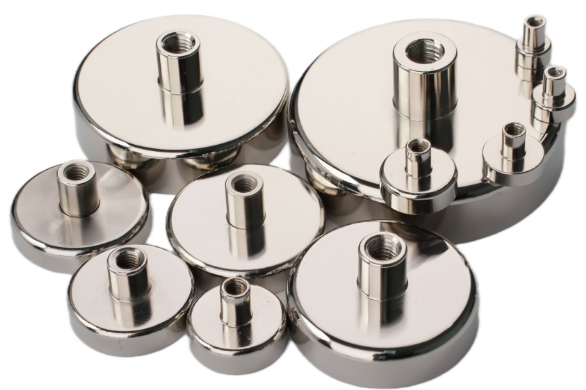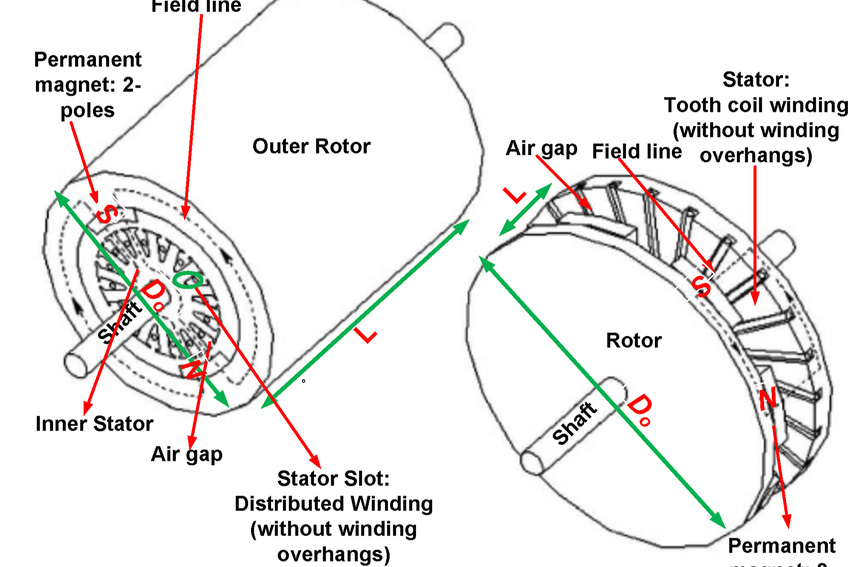An Overview of Magnetic Resonance Imaging (MRI)
Permanent magnets find extensive and beneficial applications in medical settings. One of such uses is MRI, known as magnetic resonance imaging. While there are other types of imaging techniques like CT and ultrasound scans, used in radiology, MRI is particularly known for producing detailed imagining of the body organs, as well as physiological processes that occur within the body. Here, we'll introduce you to MRI, how it works, its application, and the risks involved in using MRI.
What is Magnetic Resonance Imaging?
Magnetic resonance imaging (MRI) is a type of scan or imaging technique that uses powerful magnetic fields and radio waves to produce detailed images (anatomy and the physiological processes) of the inside of the body, including internal structures within the body. The use of powerful magnets in MRI systems simply indicates that the technique depends on magnetic fields to operate effectively.

A modern MRI Scanner (Source: Wikimedia Commons)
The majority of MRI machines are made of massive, tube-shaped magnets. When someone lies inside an MRI machine, the magnetic field temporarily realigns water molecules inside the person's body. The generated radio waves cause the aligned atoms to produce faint signals, which are used to create cross-sectional MRI images that are somewhat similar to the slices in a loaf of bread. These MRI machines can equally render 3D images that you can view from different angles.
Mechanism of Magnetic Resonance Imaging
The main components of an MRI scanner are the main magnet that polarizes the sample, the shim coils, which correct shifts in the homogeneity of the main magnetic field, the gradient system that helps to localize the region to be scanned, and the RF system, which excites the sample and detects the resulting NMR (Nuclear Magnetic Resonance) signal. The entire setup is controlled by one or more computers. Note that NMR is the selective absorption of very high-frequency radio waves by specific atomic nuclei that have been subjected to a suitably powerful stationary magnetic field. The functioning of a magnetic resonance imaging system, especially in medical applications, involves hydrogen nuclei, consisting mainly of protons in tissues. These protons create a signal, which is processed to form a detailed image of the body based on the density of those nuclei in a specific region. Note that these protons are affected by fields from other atoms to which they are bonded, and this makes it possible to separate responses generated by interaction with hydrogen in specific compounds. To carry out an MRI scan, the individual is placed within an MRI scanner, which forms a strong magnetic field around the area to be scanned. First, energy from the magnetic field is temporarily applied to the patient at an appropriate resonance frequency. Once the energy is absorbed, the atoms are excited by a computer-generated radio frequency (RF) pulse. A receiving coil measures the resultant signal. As these coils are switched rapidly during excitation and response to perform a moving line scan, they generate the repetitive noise typical of an MRI scan, even as the windings move slightly due to magnetostriction. The contrast between different tissues in the body is determined by the rate at which excited atoms return to the equilibrium state.
When is Magnetic Resonance Imaging Needed?
MRIs are very useful in diagnosis. Magnetic Resonance Imaging provides a noninvasive method for doctors to examine the body organs of patients' tissues and skeletal systems. It produces high-resolution images of the inside of the body to help diagnose various problems.
Risks
Because powerful magnets are used in MRI systems, the presence of metal in the body may pose a safety hazard if it is attracted to the magnet. Besides being attracted to the magnet, metal objects are capable of distorting the generated MRI image. Pregnant and lactating women are often pre-examined before having an MRI. Even people with tattoos will likely have to complete a questionnaire that includes whether they have metal or electronic devices in their bodies before getting an MRI. Although some devices are certified as MRI-safe, they generally include the following:
- Metal clips
- Body rings
- Surgical implants, such as metal plates in the knee cap
- Metallic joint prostheses
- Intrauterine device
- Artificial heart valves
- An implantable heart defibrillator
- Implanted drug infusion pumps
- Implanted nerve stimulators
- Metal pins, screws, plates, stents, or surgical staples
- Cochlear implants
- A bullet, shrapnel, or any other type of metal fragment
Wrapping Up
MRI is an important imaging technique used in medical settings, mostly diagnostic laboratories, to view the image of body organs and physiological processes. Most notably, they contain powerful magnets, which produce the required magnetic field. For more information, please visit https://www.stanfordmagnets.com/.















